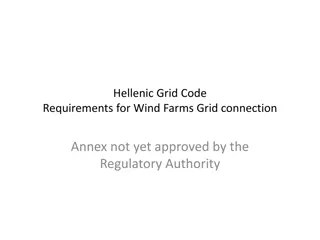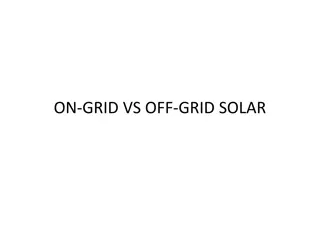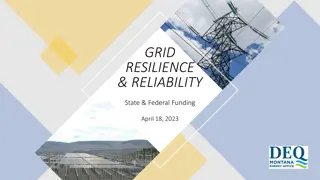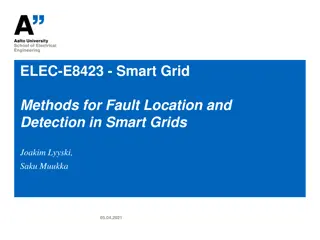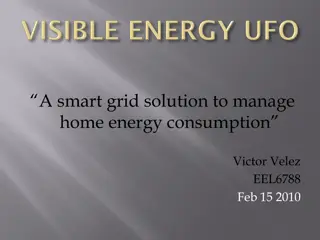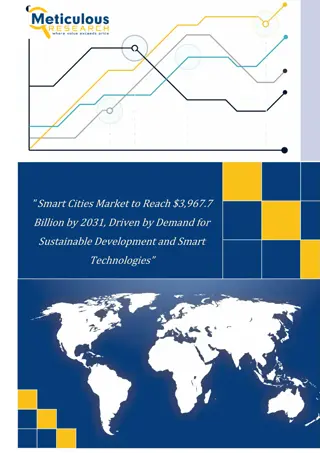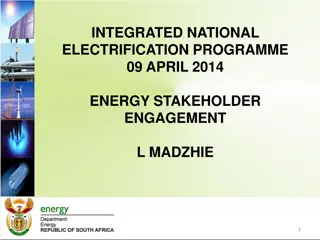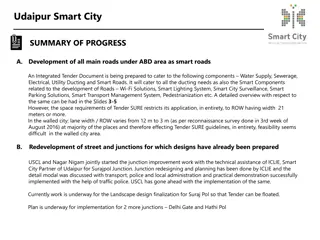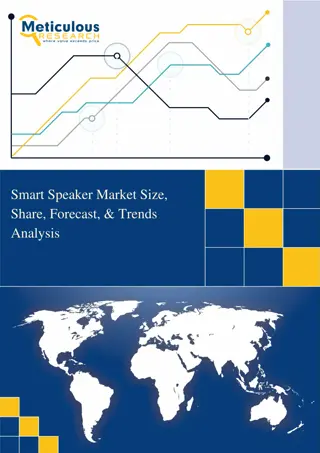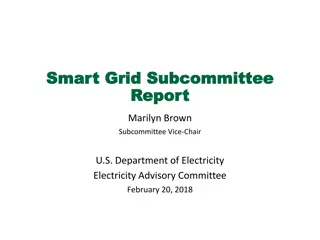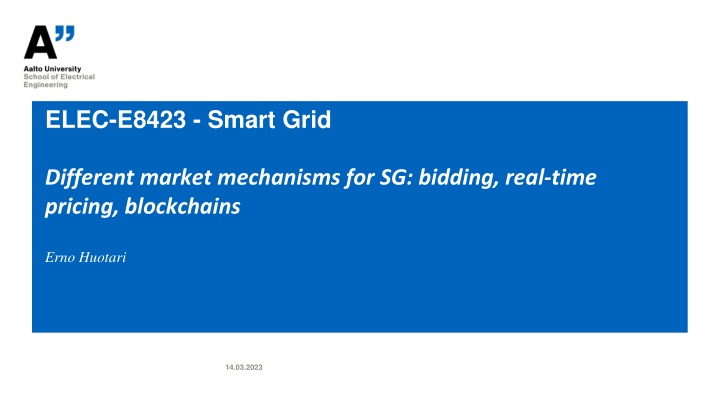
Efficient Market Mechanisms in Smart Grid
Smart Grid utilizes market mechanisms such as Bidding, Real-Time Pricing, and Capacity Market to enhance electricity trading efficiency, promote renewable energy adoption, and ensure grid stability. These mechanisms facilitate quick response to supply and demand changes, incentivize consumer behavior shifts, and encourage investment in new capacity.
Download Presentation

Please find below an Image/Link to download the presentation.
The content on the website is provided AS IS for your information and personal use only. It may not be sold, licensed, or shared on other websites without obtaining consent from the author. If you encounter any issues during the download, it is possible that the publisher has removed the file from their server.
You are allowed to download the files provided on this website for personal or commercial use, subject to the condition that they are used lawfully. All files are the property of their respective owners.
The content on the website is provided AS IS for your information and personal use only. It may not be sold, licensed, or shared on other websites without obtaining consent from the author.
E N D
Presentation Transcript
ELEC-E8423 - Smart Grid Different market mechanisms for SG: bidding, real-time pricing, blockchains Erno Huotari 14.03.2023
Introduction To ensure the efficient functioning of the Smart Grid, market mechanisms have been established, that facilitate the buying and selling of electricity This presentation will focus on various market mechanisms used in the Smart Grid, including Bidding, Real-Time pricing, Blockchains, Capacity Market and Demand Response Programs These market mechanisms are designed to improve the efficiency and reliability of electricity trading, stimulate the adoption of renewable energy sources, and ensure Typical structure of a Local Electricity Market (LEM) (Bandeiras et al., 2023) grid stability. 14.03.2023 Page 2
Bidding A market mechanism used to allocate electricity resources efficiently by allowing market participants to buy and sell electricity in real-time Can be conducted through different types of auctions, such as Pay-as-Bid or Uniform Price auctions Enables market participants to respond quickly to changes in supply and demand conditions Examples of bidding mechanisms used in Smart Grid: Real-Time Pricing (RTP) Day-Ahead Bidding Balancing Market Capacity Market Ancillary Services Market Revenue in Pay-as-Bid vs. Uniform Pricing auctions (Skoulidas et al., 2002) 14.03.2023 Page 3
Real-Time Pricing Allows electricity suppliers to set prices in real-time Provides incentives for consumers to shift their electricity usage to periods of low demand Helps reduce the need for new electricity infrastructure by reducing peak demand Can be combined with other market mechanisms Helpful in integrating renewable energy sources into the grid Real-Time Pricing compared to other types of Time-Variant Pricing strategies (Spiller, 2015) 14.03.2023 Page 4
Capacity Market A market mechanism that provides incentives for electricity suppliers to invest in new capacity Helps to ensure grid stability and reliability and prevent blackouts or brownouts Can be designed in different ways Good in complementing other market mechanisms Incentivizes the development of new energy storage and demand side management systems Capacity supply and demand curves at PJM in the US (Moye & Meyn, 2017) 14.03.2023 Page 5
Blockchains A secure, decentralized and transparent technology Can enable the creation of new market mechanisms, such as peer-to-peer energy trading Can also be used to enable the tracking and verification of renewable energy credits Can help increase the resilience and reliability of Smart Grids Main challenges include scalability, interoperability, and regulatory issues Evolution of blockchain for Smart Grid (Yapa et al., 2021) Transaction in a blockchain (Traditional Contracts/Smart Contracts) (Bandeiras et al., 2023) 14.03.2023 Page 6
Demand Response Programs Programs that encourage consumers to reduce or shift their electricity usage during periods of high demand or when the grid is stressed Usually based on different incentives Can be enabled by Smart Grid technologies, such as Advanced Metering Infrastructure (AMI) and Automated Demand Response (ADR) Can also be used in conjunction with other market mechanisms Main challenges comprise of uncertain consumer engagement, privacy concerns, and regulatory issues Potential of a Demand Response Program for consumer curtailment (Hochstetler, 2007) 14.03.2023 Page 7
Conclusions Smart Grid market mechanisms optimize energy usage and improve the reliability and efficiency of the Smart Grid They help with the integration of Variable Renewable Energy (VRE) Each of the mechanisms have their benefits and drawbacks Usually multiple market mechanisms are used in conjunction to complement each other, and achieve the desired result 14.03.2023 Page 8
Source material used Bandeiras, F., Gomes, ., Gomes, M. and Coelho, P. (2023) Exploring Energy Trading Markets in Smart Grid and Microgrid Systems and Their Implications for Sustainability in Smart Cities. http://dx.doi.org/10.3390/en16020801. Skoulidas, C., Vournas, C., & Papavassilopoulos, G.P. (2002). An Adaptive Game for Pay-as-Bid and Uniform Pricing Power Pools Comparison. https://www.researchgate.net/figure/Mode-of-payment-in-Uniform-Pricing-and-Pay-As-Bid_fig3_242102105. Yapa, C., de Alvis, C., Liyanage, M. and Ekanayake, J. (2021) Survey on blockchain for future smart grids: Technical aspects, applications, integration challenges and future research. https://doi.org/10.1016/j.egyr.2021.09.112 Spiller, B. (2015) All Electricity is Not Priced Equally: Time-Variant Pricing 101. https://blogs.edf.org/energyexchange/2015/01/27/all-electricity-is-not-priced-equally-time-variant-pricing-101/. Moye, R. & Meyn, S. (2017). Redesign of U.S. Electricity Capacity Markets. https://www.researchgate.net/figure/PJM-Capacity-Market-Demand-Curve_fig3_321935365. Hochstetler, R. L. (2021). Markets for flexibility: Product definition, market design, and regulation. In F. Sioshansi (Ed.), Variable Generation, Flexible Demand (pp. 451-476). Academic Press. https://doi.org/10.1016/B978-0-12-823810-3.00003-0. Kiyak, C. and de Vries, A. (2017) Electricity Market Mechanism regarding the Operational Flexibility of Power Plants. Modern Economy, 8, 567- 589. https://doi.org/10.4236/me.2017.84043. 14.03.2023 Page 9




